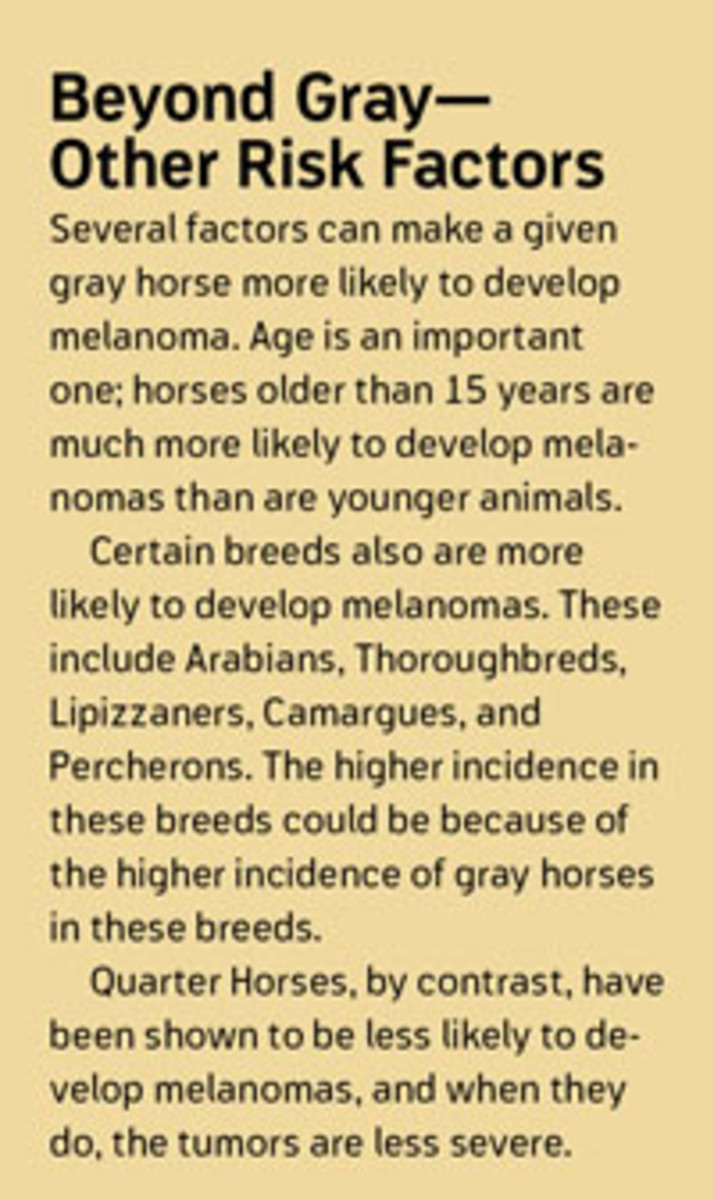Q I’m considering buying a gray horse, but am aware many grays develop cancer. This horse is everything I want in a trail-riding mount, but I’m worried about the risk. What kinds of cancer do gray horses develop, and why are they more likely to develop it than are horses of other colors? Also, what can I do to find out if this horse already has cancer? Can I prevent him from getting it?

FRANCES KENT, California
A Several types of cancer occur in horses, and the second-most-common type is melanoma—the type found most often in gray horses. Some reports indicate the prevalence of melanomas developing in gray horses is as high as 80 percent. (Gray horses can develop other types of cancer, but melanomas are most common.) Gray horses are more likely to develop this type of cancer because they have more pigmented skin, and melanoma tumors arise from mutations in the cells that make up pigmented skin.
Much research is being done on melanomas in horses, but it’s still unclear why they develop. Evidence suggests genetic mutations as the cause, and that these mutations are most commonly inherited. Exposure to UV radiation has also been suggested as a cause.

There’s no proven prevention for melanoma development in the horse. Early recognition is important, and surgical removal is often curative. Melanomas tend to be less likely than other tumors to spread to internal organs, although this can occur.
A thorough physical examination by a veterinarian is typically sufficient to diagnose melanoma. The sheath and anal area should be examined closely, and the horse may need to be sedated to enable a thorough examination. Horses also can have tumors that can’t be seen, and so sometimes a more thorough examination is advisable. Such an exam may include rectal palpation to feel for any masses in the abdomen, or ultrasound or endoscopy to detect any masses in the throat, chest, or major organs in the abdomen. It would be unusual to find melanomas internally without evidence of external masses.
There’s no prevention for melanoma development in the horse. Melanomas in horses tend to be slow growing, and most problems that occur are due to invasion of important structures around the area of the mass rather than from tumors developing in other parts of the body. Treatments for melanomas are constantly evolving.
LYNDI L. GILLIAM, DVM, DACVIM, PhD
Associate Professor,
Equine Internal Medicine
Oklahoma State University






